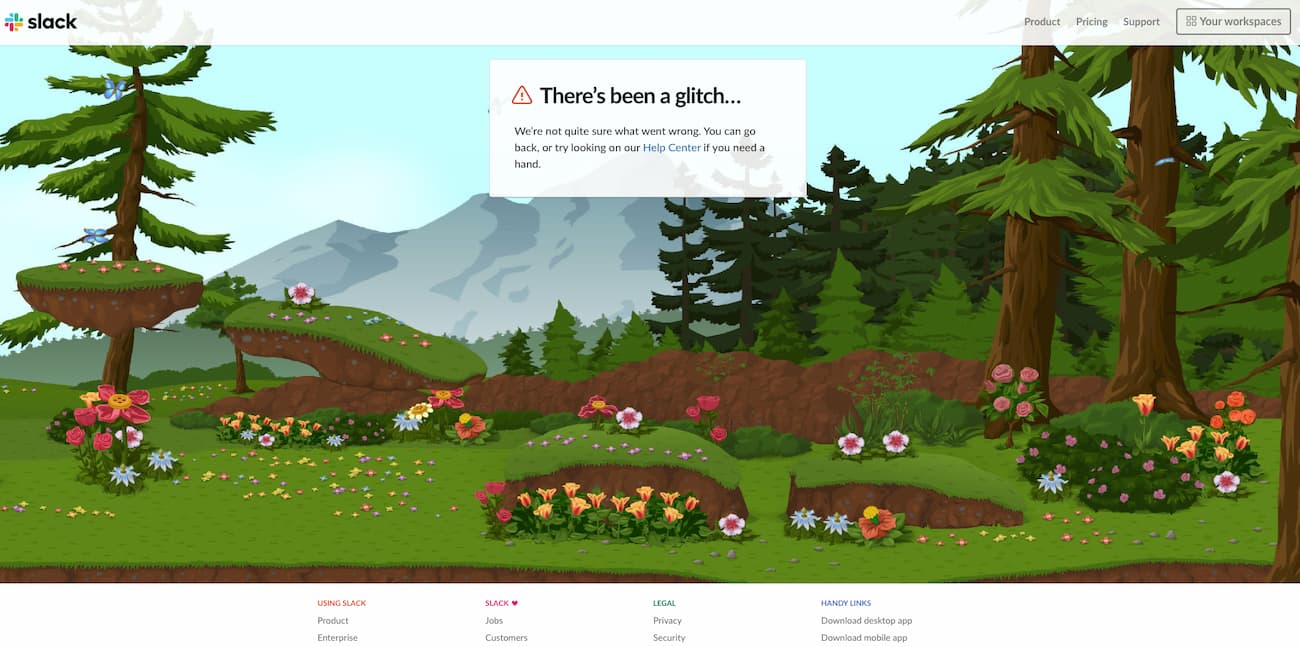How Top Brands Like Wendy's And Canva Have Gamified The Dreaded 404 Error Page And People Are Loving It
As any developer, business site owner or digital marketer can attest, 404 error pages create anxiety. After all, they signify that something went wrong. Somehow we messed up and missed something on our own website. How can a customer trust us if we can’t even keep our own site properly under control and organized?
In truth, 404 error pages happen. Plain and simple, and no one can prevent it 100% of the time. Not even mega-corporations like Microsoft can make the dreaded error page obsolete. Instead, a number of brands have decided to wisely lean into their reality in a practical but fun way.
Introducing the gamification of the 404 error page.
Just what is the 404 error page, and why does it happen?
Simply put, a 404 error page is the automatically generated page that a user sees when there isn’t a webpage available at the URL they are visiting.
Sometimes this can be an internal mistake and easily correctable. Oftentimes, it’s a user error and there’s nothing we, as website owners, can do about it.
For example, if a visitor decides to go directly to a page on your website that doesn’t exist, they will instead see the 404 error page.
There are only three reasons this ever happens:
- A user typed in the wrong URL address directly.
- The visitor clicked on a broken link, which takes them to a page that doesn't exist anymore. This can be prevented with URL redirects.
- Finally, the website owner removed the page entirely or moved it elsewhere on their site by changing the URL (or permalink for WordPress users) and forgot to set a redirect.

The error page above is standard. We’ve all seen it, and we’ve all been annoyed by it. Usually there’s a quick link to the homepage of the site that will hopefully prevent the visitor from increasing the bounce rate for the site by leaving.
Today we’re going to take a look at the latest trend in 404 error pages and how the brands using them have turned a negative experience for the site visitor into a positive one. So much so, that many of these pages have found themselves mildly trending on social media as others click to a page they know doesn’t exist to play a quick game that seems hidden from the rest of the world.
Canva 404 Page
The popular graphic design platform, Canva, has turned a frustrating experience for a customer into a surprising one with a cute HTML5 game.
Canva’s gamification of the error page included an easily recognizable branded version of the old tile shuffle game once popular with bored kids on car trips in the 1980s. It is nostalgia done right.
Wendy's 404 Page
How about instead of a boring error page, you can play a brand-building retro-style browser game called BurgerTime?
You’re Wendy and you have to avoid the bad guys as you run and climb around to complete the Wendy’s meal.
Points grow, win or lose, until eventually it’s game over. I spent a little too much time playing this game in order to record the video below, and I enjoyed it. By far, Wendy’s has the most entertaining 404 error page. Social media users discovered and shared the error page, causing the fast food giant to create a permanent link.
You can play the game yourself by clicking here.
Slack 404 Page
Not to be outdone, Slack took the gamification of their error page and really integrated it with their brand identity, which is all about communication. The company introduced an adorable, calming scene that’s more a user experience than it is a game. You can drag it around, click on characters, and even discover a few hidden things along the way.

On this unique error page, Slack not only apologized to the site visitor, but also a link to their help center.
Figma 404 Page
As a design and prototyping platform, my expectation of Figma was high. I was not disappointed.
Figma combined a unique visual experience with unexpected interactivity, and the results got noticed.
8 ways to make the most out of your 404 error page without games
- Apologize and offer a solution, even if it's a link to your help center or contact form.
- Explain the problem simply without using technical vocabulary.
- Show off a little personality and whimsy, it lightens the annoyance your site visitor is feeling.
- Include a sign-up box to your newsletter or lead magnet.
- Provide very clear calls to action on the page.
- Think of your 404 page as a feedback channel and track the broken links.
- Make your 404 page immersive and intuitive
- Include your strongest assets on this page and most popular content.
You have just seen verifiable proof that broken pages need not be a catastrophic failure. Many site owners are beginning to use their 404 error pages to drive conversions and even build brand awareness.
Take a look at your 404 page right now. Ask yourself whether you could add some humor to it or animation (preferably humor that is animated!).
Along with the humor, do you think you can include some helpful links, contact information (live chat is always welcome) or a quick search bar. This way you’re showing not just personality but also the desire to help.
Go ahead and check out your 404 error page right now and get creative – your conversions will thank you.



Whether coaching, building an e-learning brand or a niche membership site take my advice and spend a little extra professional and original imagery. Let me explain just how valuable an investment in real photos can become. Keep Learning >

People want to buy from those they feel they know, like, and trust. That’s a universally held truth. The best way to earn the trust of your buyer persona is to be authentic in how you present yourself and your brand. We’re going to go beyond the marketing buzzword to the core value on your long-term growth. Keep Learning >



